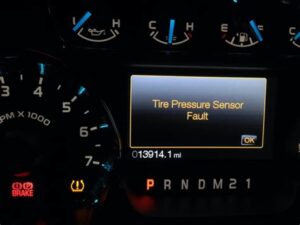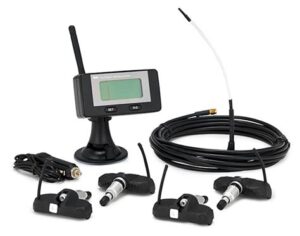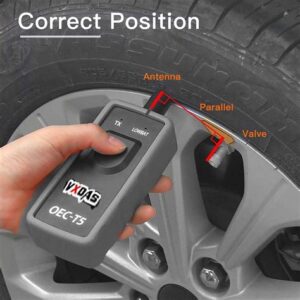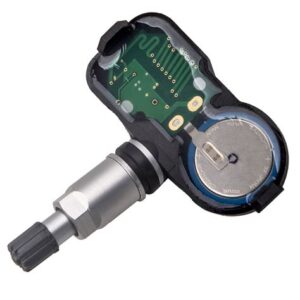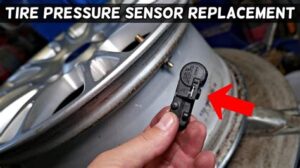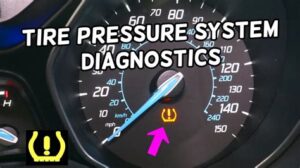Learn how to reset your tire pressure sensor effectively with our step-by-step guide, ensuring proper calibration and avoiding common mistakes for safe driving.Maintaining optimal tire pressure is essential for the performance and safety of your 2016 Buick Encore. One critical component that helps monitor tire pressure is the tire pressure sensor, which provides real-time data to ensure your tires are adequately inflated. However, there are times when this sensor may require resetting, particularly after tire maintenance or when a tire has been replaced. In this blog post, we’ll explore the importance of understanding the tire pressure sensor, the reasons behind the need for resetting, and provide a detailed, step-by-step guide for the process. Additionally, we will discuss the importance of proper calibration and help you avoid common mistakes that can lead to misreading tire pressure. Join us as we delve into the intricacies of keeping your Buick Encore’s tire pressure sensor functioning smoothly for a safer driving experience.
Understanding Tire Pressure Sensor
A Tire Pressure Sensor is a critical component in modern vehicles that monitors the air pressure in your tires. In cars like the 2016 Buick Encore, these sensors play a pivotal role in ensuring your safety on the road.
When the tire pressure drops below recommended levels, the sensor triggers an alert on your dashboard, allowing you to take immediate action. Properly inflated tires not only enhance fuel efficiency but also improve vehicle handling and extend tire life.
The tire pressure monitoring system (TPMS) in the 2016 Buick Encore is designed to automatically check the pressure levels of all four tires. The sensors gather information and communicate with the vehicle’s computer system. If any tire is significantly under-inflated, the TPMS will activate a warning light, indicating that it’s time for a check.
How Tire Pressure Sensors Work
- Each tire is equipped with a sensor that measures air pressure.
- The sensors report data to the vehicle’s onboard computer.
- When tire pressure is low, the system triggers a warning light on the dashboard.
- Drivers can then take action to inflate the tires appropriately.
Key Benefits of having a properly functioning tire pressure sensor include:
- Enhanced safety by preventing blowouts.
- Improved fuel efficiency through optimal tire pressure.
- Extended longevity of tires.
Overall, the Tire Pressure Sensor is an essential feature that contributes significantly to vehicle performance and safety.
Why Resetting is Necessary
Resetting your tire pressure sensor is crucial for maintaining the safety and performance of your vehicle. When the tire pressure monitoring system (TPMS) detects low pressure in any of the tires, it activates a warning light on your dashboard. This notification is essential as it can alert you to potential issues before they become serious problems.
Here are some reasons why resetting your tire pressure sensor is necessary:
- Safety First: Driving with incorrect tire pressure can lead to tire blowouts or reduced traction, increasing the risk of accidents.
- Efficiency: Properly inflated tires improve fuel efficiency and vehicle handling, allowing for smoother rides and better mileage.
- Prolonged Tire Life: Regularly checking and resetting your tire pressure can help prevent uneven wear, thus extending the lifespan of your tires.
- Accurate Readings: Resetting ensures that any changes in tire pressure are accurately reflected in the vehicle’s dashboard, giving you a clear indication of their status.
Moreover, after performing any tire maintenance such as rotation, replacement, or inflation, it’s vital to reset the tire pressure sensor to ensure that the system is calibrated to the new tire pressures. Ignoring this step can result in persistent warning lights, which not only can be annoying but also signal deeper issues with your vehicle’s tire pressure monitoring system.
In summary, resetting your tire pressure sensor is not just a routine task; it’s an essential part of vehicle maintenance that ensures your safety on the road.
Step-by-Step Resetting Process
Resetting the tire pressure sensor in your 2016 Buick Encore is essential for maintaining optimal vehicle performance and safety. Follow these simple steps to ensure your tire pressure monitoring system (TPMS) operates correctly:
- Check Tire Pressures: Before you begin the reset process, make sure all tires, including the spare, are inflated to the manufacturer’s recommended pressure. You can find this information on the driver’s side door jamb.
- Turn on the Ignition: Insert your key into the ignition and turn it to the On position without starting the engine. This will activate the vehicle’s electrical systems.
- Locate the TPMS Reset Button: The reset button is usually located under the steering wheel, near the fuse panel. It may also be found on the dashboard or readily accessible from the driver’s seat.
- Press and Hold the Reset Button: Hold down the reset button until the TPMS warning light blinks three times. This indicates that the system is resetting.
- Release the Button: After the light has blipped, release the reset button. The TPMS light should now remain on for a few seconds before turning off entirely.
- Start the Engine: Turn the key to start the engine. Drive your vehicle for about 10–15 minutes at speeds of 50 mph or higher. This helps the system recalibrate and recognize the tire pressures.
- Turn Off the Engine: After the drive, turn off the engine. Wait a few moments, then restart the engine to check whether the TPMS light remains off.
If the TPMS light does not turn off after following these steps, it may indicate a deeper issue with the tire pressure monitoring system. If so, consult a qualified technician to diagnose the problem.
By adhering to this step-by-step resetting process, you’ll ensure that your 2016 Buick Encore’s tire pressure sensor is functioning accurately, helping to maintain safe driving conditions.
Importance of Proper Calibration
Proper calibration of your tire pressure sensor is essential for ensuring the safety and efficiency of your vehicle. When the sensors are accurately calibrated, they provide real-time information about tire pressure, helping drivers maintain optimal performance.
Here are some key reasons why proper calibration is crucial:
- Safety: Under-inflated tires can lead to poor handling, increased tire wear, and higher risks of tire blowouts. By calibrating your tire pressure sensor, you can avoid these potentially dangerous situations.
- Fuel Efficiency: When tires are properly inflated, your vehicle runs more efficiently. Ensuring your tire pressure sensors are calibrated means you’re more likely to have your tires at the correct pressure, which can save you money at the pump.
- Tire Longevity: Properly calibrated sensors help you maintain the correct tire pressure, which can extend the life of your tires. Tires that are consistently kept at the right pressure wear more evenly and last longer.
- Performance: The handling and stability of your vehicle depend heavily on tire pressure. Accurate readings from your tire pressure sensor allow you to make necessary adjustments, ensuring your vehicle performs at its best.
In summary, proper calibration of your tire pressure sensor is a vital part of car maintenance that impacts safety, efficiency, longevity, and vehicle performance. Neglecting this aspect can lead to various problems, which is why regular checks and recalibrations are recommended.
A well-maintained tire pressure sensor is fundamental to vehicle safety and performance.
Avoiding Common Mistakes
When it comes to resetting the tire pressure sensor on your 2016 Buick Encore, many drivers unintentionally make common mistakes that can lead to further complications or even inaccurate tire pressure readings. Below are some pitfalls to avoid during the resetting process:
- Ignoring Manufacturer Guidelines: Always refer to the owner’s manual for specific instructions on resetting the tire pressure sensor. Skipping this step can result in improper reset procedures.
- Resetting at Incorrect Pressure Levels: Make sure that the tire pressure is adjusted to the recommended levels before attempting to reset the sensor. Failing to do so can cause the sensor to register inaccurate data.
- Not Checking for Air Leaks: Before resetting, ensure that all tires are free of leaks. A tire with low pressure due to a leak will lead to ongoing warnings even after a reset.
- Resetting Too Frequently: Avoid resetting your tire pressure sensor multiple times in a short period without addressing underlying issues. This practice can confuse the system and result in error codes.
- Overlooking the Spare Tire: In some vehicles, the spare tire is also monitored by the tire pressure sensor system. If the spare is low on pressure and not checked, it may trigger a warning light even after a reset.
- Neglecting to Drive After Reset: After completing the reset, it’s essential to drive your Buick Encore for a short distance. The system requires movement to recalibrate and help clear any existing errors.
By being mindful of these common mistakes, you can ensure a smooth and effective tire pressure sensor reset process on your 2016 Buick Encore. Proper attention to detail will help maintain your vehicle’s performance and safety on the road.
Frequently Asked Questions
Why would I need to reset the tire pressure sensor on my 2016 Buick Encore?
You may need to reset the tire pressure sensor if you’ve checked your tire pressure, inflated the tires, or replaced a tire, as the sensor might not automatically refresh.
How do I know if my Tire Pressure Monitoring System (TPMS) needs resetting?
If the TPMS warning light on your dashboard is illuminated, it indicates that either the tire pressure is low or the sensor needs resetting.
What is the process to reset the tire pressure sensor on a 2016 Buick Encore?
To reset the tire pressure sensor, inflate all four tires to the recommended pressure, then turn the ignition to the ‘On’ position without starting the engine, and press the TPMS reset button until the light blinks three times.
Where is the TPMS reset button located in the 2016 Buick Encore?
The TPMS reset button is typically located beneath the steering wheel or on the dashboard near the driver’s side, but refer to the vehicle’s manual for exact positioning.
What should I do if the TPMS light stays on after resetting?
If the TPMS light remains on after a reset, it may indicate a malfunction in the system, or one or more tires may still have low pressure. Check tire pressures first, then consult a mechanic if the problem persists.
Can I reset the tire pressure sensor myself, or do I need a professional?
You can reset the tire pressure sensor yourself by following the specific steps outlined in your vehicle’s owner’s manual, but consulting a professional is recommended if you’re unsure or if issues continue.
How often should I check the tire pressure on my Buick Encore?
It’s advisable to check the tire pressure at least once a month and before long trips to ensure optimal performance and safety.
